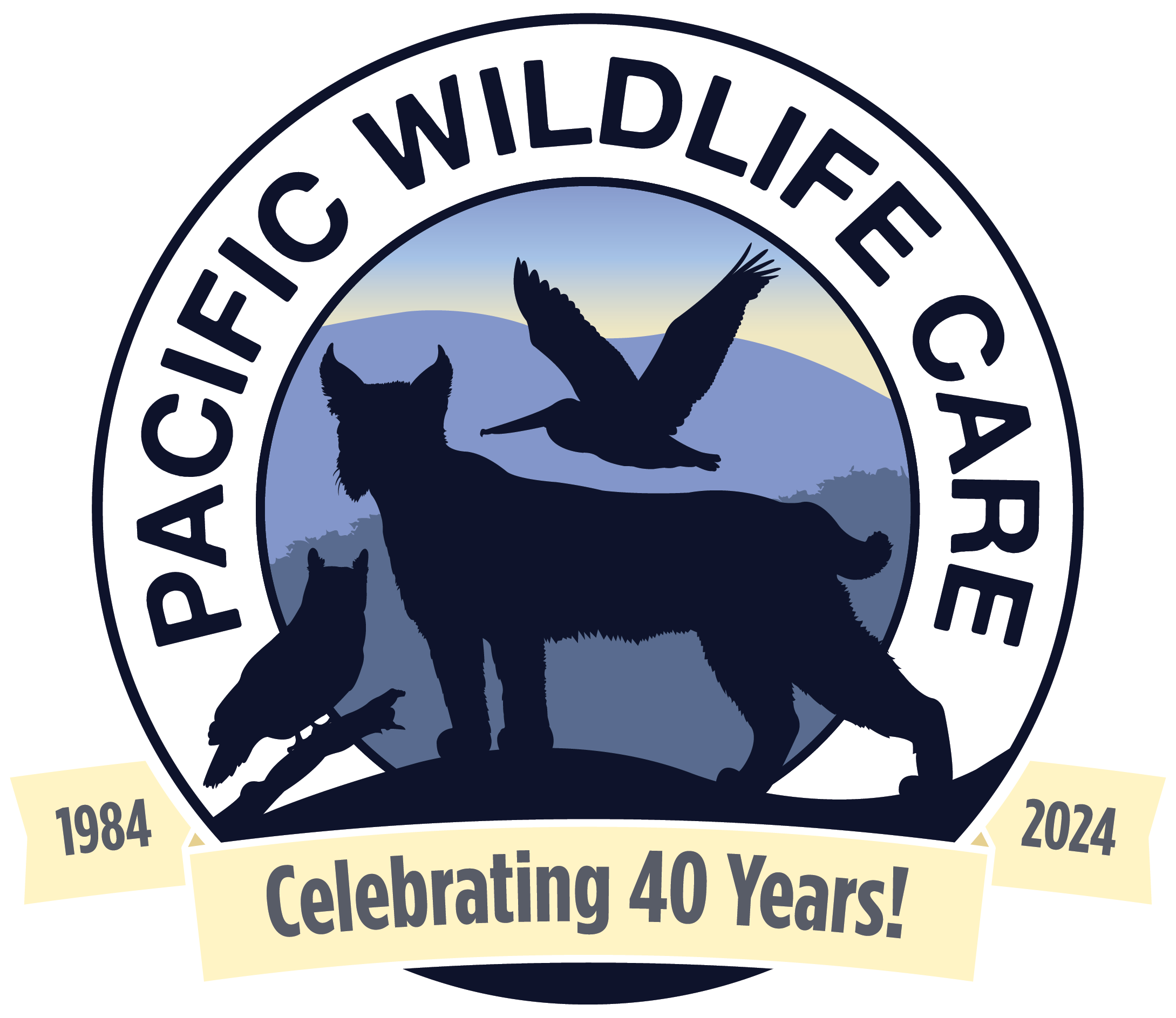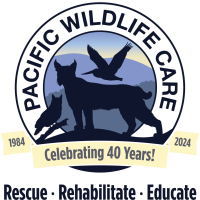Red-tailed Hawk 24-1516: The Final Chapter
The multi-episode saga of RTHA 24-1516 had all the dangers and plot twists of a summer blockbuster. The nestling hawk gained avian celebrity status in SLO County when he was taken to a bald eagle nest by one of the adults, presumably as food for their two eaglets. Against all odds, the hawk survived.
In such occurrences, rare but not unheard of, the belief is that the adults respond to the baby hawk’s gape and begging calls by feeding it along with their own.
Still, these tales don’t usually end well for the hawk.
After 25 days in the nest, the young hawk was harassed by the much larger eaglets to fall to the ground far below. He probably wouldn’t have survived much beyond that, but concerned nest-watchers knew to call Pacific Wildlife Care, where he entered the next episode in his drama.

Emaciated, with several small wounds on his face and head but otherwise surprisingly unscathed, he spent the next several weeks at the PWC clinic, devouring food. There, he gained both weight and a reputation for healthy ferocity. Before he could be released to the wild, though, he also needed to gain flight practice, body conditioning, and hunting skills. For this, he was transferred to a large offsite aviary, with two other juvenile red-tailed hawks. Once again, he had two “roommates.” This time, they were his own species.

Together, they practiced flight maneuvers and the hunting of live mice in a big feeding bin, while still being fed as their skills improved. A Go-Pro camera attested to their “tremendous appetites,” says their caregiver.

After several weeks, RTHA 24-1516 was returned temporarily to the PWC clinic for a weight check and evaluation, which revealed all of the hawk’s tail feathers had broken – not an uncommon consequence of the time a raptor spends in care, especially such an active raptor. But survival in the wild requires a hawk to be an aerial athlete, and that requires perfect flight feathers.
This called for an intricate procedure called imping, a centuries-old procedure used by falconers to implant donor feathers in a bird’s broken tail or wings. Our veterinarian learned it years ago from a falconer who was himself a veterinarian. She enjoys the “instant gratification” of it and makes it look easy. But there is nothing easy about it.
The choice of feathers must be precise, from a bird of the same species, size, age, and (usually) gender. For that reason, our veterinarian regularly harvests feathers from deceased birds, catalogues them, and stores them in the clinic’s feather repository. On the day of the procedure for RTHA 24-1516, she chose each donor feather and inserted it into the shaft of the hawk’s own, broken feather. When she finished, the “new” tail was a thing of beauty.

Within days, an imped bird is able to make full use of its tail in flight maneuvers. In time, the imped feathers will molt just as the bird’s own feathers would have, and new ones will grow in.
At this point in the eventful drama of RTHA 24-1516, the scene shifted back to the large offsite aviary, where he was returned and rejoined the other two red-tailed hawks. Three days later, the caregiver opened the doors to free them. The others flew out immediately, but as if in an anticlimax to this final chapter, it took the eagle-nest-survivor four hours before he launched himself and soared out to freedom in the wild.
It was a soft release, meaning the caregiver placed fresh food out daily on a feeding platform, in case any one of the three was unsuccessful in hunting and needed supplemental food. But none returned. Apparently, they had learned their live-hunting lessons well.
Red-tailed hawk 24-1516 is healthy and now free, in an ending made possible by a call to the PWC hotline from concerned nest-watchers; care provided at the PWC clinic and offsite aviary; the exceptional skills of our veterinarian; and crucial donations – always welcome and appreciated – from caring members of the public.






